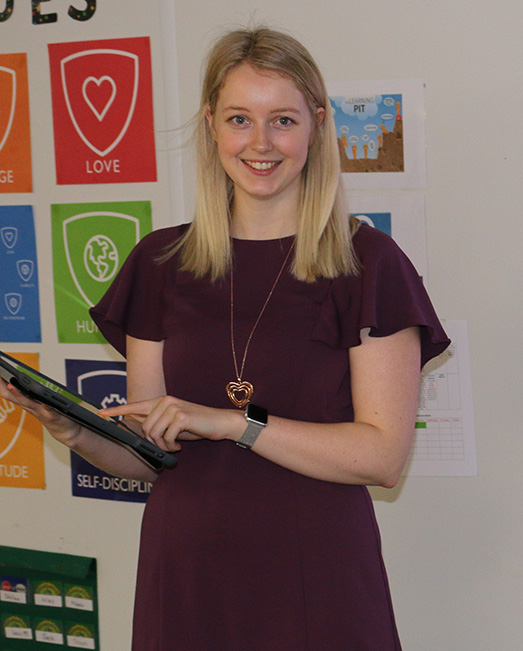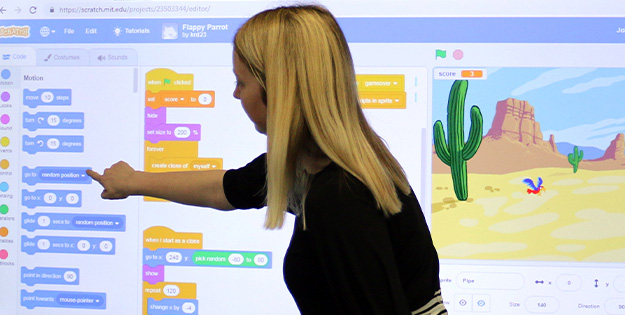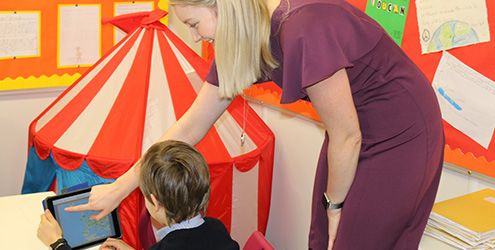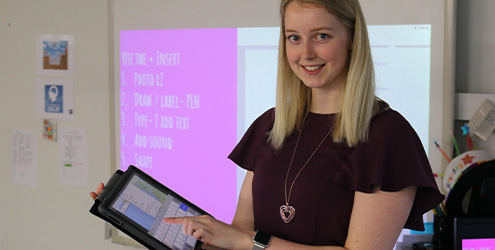Career
Copyright@ Australian Catholic University 1998-2025 | ABN 15 050 192 660 CRICOS registered provider: 00004G | PRV12008
Copyright@ Australian Catholic University 1998-2025 | ABN 15 050 192 660 CRICOS registered provider: 00004G | PRV12008

ACU alumna Rachel Coathup teaches in a 1:1 iPad school in London, which means every student has access to their very own digital device. Screen time can be a contentious issue – but despite the naysayers, Rachel believes digital learning can enhance education and provide a unique opportunity for kids to get creative.
Since she was a high school student, Rachel knew she wanted to be a teacher.
“I organised work experience for myself at my old primary school. When I took my first class for the afternoon, I remember going home and saying, ‘This is exactly what I want to do’.”
When it was time to select a university, Rachel was equally single-minded. “I still remember when I went to ACU for the first time during Open Day. From the minute I stepped onto the campus I knew this was where I wanted to study teaching."

After a stint working in a small Catholic school for two years, Rachel, like so many Australian teachers before her, was searching for the next challenge and settled on a move to London.
“It’s very easy for Australians to get teaching work in the UK. I contacted an agency, had a Skype interview and I found out I had the job on the same night.”
Rachel is now Head of Digital Curriculum at a London school, which involves teaching computing to years 1 to 5 and developing and delivering the digital curriculum.
“Digital learning is a big part of education today. In my school everyone has their own iPad in years 3 to 8.”
With young eyes now so often set firmly on small screens, Rachel believes the need to review how teachers integrate digital learning into the curriculum is more important than ever. “My role involves training, meeting with and assisting the other teachers to share how they can integrate digital learning into their lessons,” she explained.
“It also involves a lot of self-training and learning for us as well, as we have to keep up to date with regular changes to technology. And we must be willing to embrace new educational tech movements ourselves.”

Most students have already been exposed to devices long before they make it into her classroom.
“Most kids have used a smartphone or iPad before they have even spoken!” she said.
“But while we might think students are competent users of technology, mostly they have only learnt how to use these devices passively, such as knowing how to swipe, open apps or watch videos.
“This means that my biggest focus becomes more about giving students opportunities to share their learning and understanding in creative ways. To help them become active technology users, I’ll set them tasks like creating their own digital posters, comics, ebooks or videos.”

Rachel’s message about technology often extends to the parents too.
“I want everyone to remember that with technology, it’s about balance, which is something we adults often forget ourselves,” she said.
“I think parents should be encouraging their children to use technology actively, such as when searching for information, sharing pictures from a holiday, or taking creative photos and videos and putting them together in a comic or ebook. Let them explore!
“We have to keep our focus on how students use technology to add value to their lessons,” she said. “But if the kids can do the same task using pencil and paper – then they should.”
Discover more about where an education degree at ACU will lead.
Copyright@ Australian Catholic University 1998-2025 | ABN 15 050 192 660 CRICOS registered provider: 00004G | PRV12008